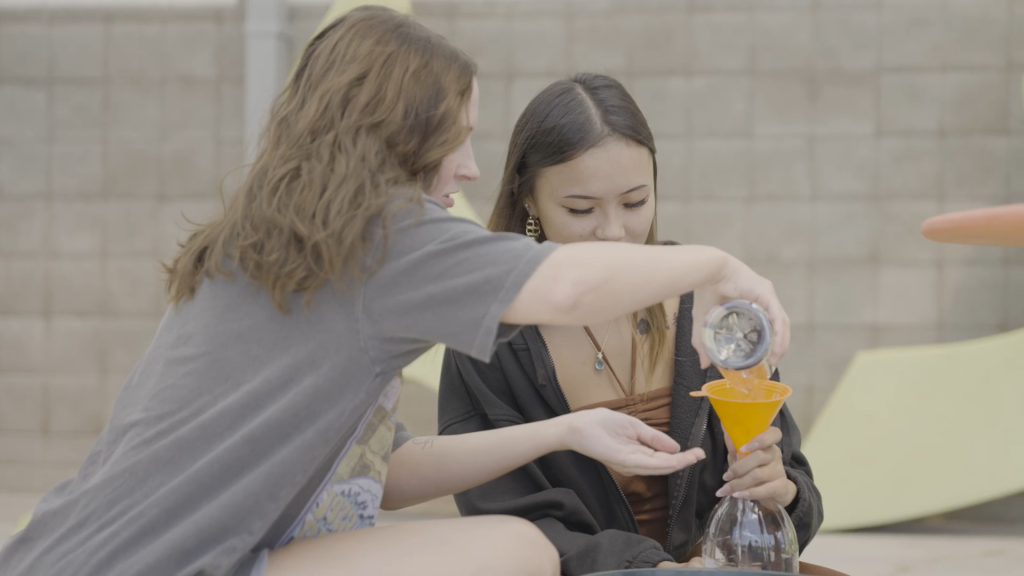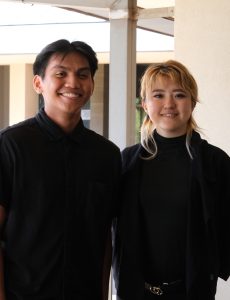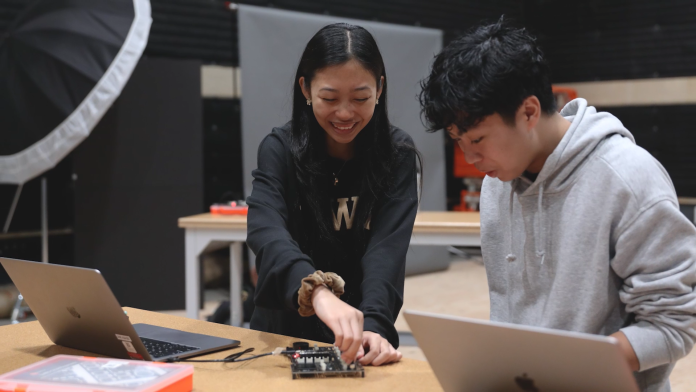The Academy for Creative Media at the University of Hawai‘i–West O‘ahu (ACMWO) created a plan to use Creative Media as a gateway to engage underrepresented students in STEM concepts — a significant step toward supporting the National Science Foundation’s Broadening Participation in Computing (BPC) initiative.
BPC, funded under NSF’s Directorate for Computer and Information Science and Engineering, brings together various stakeholders in the computer science and engineering communities to work toward increasing diversity and inclusion in the fields.
The BPCnet Resource Portal provides an opportunity for universities nationwide to submit a Departmental BPC Plan — a document that serves to coordinate BPC activities within a college — and have it read and verified by a BPC Consultant. The ACMWO Departmental BPC Plan was verified on June 3 by BPCnet.
“This is significant,” said ACMWO Director Sharla Hanaoka. “It will take years to see results, but as the only arts program on the list to achieve this verification among top-tier university engineering and computer science programs, we are breaking new ground in broadening participation efforts.”
Dr. Wendy DuBow, a BPC Consultant and also the Director of Strategies for Education Research & Evaluation at the National Center for Women & Information Technology, said funders of both computing education research and computing disciplinary research have long been seeking to broaden participation in the study of computer science-related topics.
“There is an understanding that broadening the student population will also broaden who creates and contributes to the technology that is all around us,” DuBow said.
Among these efforts on the part of the NSF involve encouraging post-secondary departments to create departmental-wide BPC plans. DuBow said working with the Computing Research Association, she has had the privilege of supporting faculty and administrators as they write these plans.
The ACMWO plan constructed by Hanaoka and Dr. Brad Ashburn, associate professor of Chemistry with the Mathematics, Natural and Health Sciences (MNHS) Division at UH West O‘ahu, “was one of the more unique plans I have worked on,” DuBow said.
“Rather than starting in a computer science or information science department like most of the other plans had, they figured out ways to make the arts a starting point for introducing technology to students,” DuBow said. “Through doing so, they have the potential to bring new faces and new perspectives into tech and at the same time provide their students with highly marketable, lucrative skills for the 21st century.”
‘Breaking the mold’
Through a collaboration between Creative Media and MNHS, and work with a BPC Consultant and representatives from The Implementation Group, Inc. consulting firm, Hanaoka and Ashburn were able to build a strong plan that made the BPCnet verified list — the only UH campus and the only non computer science/engineering program to make the list.
“This highlights the importance of diversity and inclusion in creative technology fields, not just traditional computer science, potentially inspiring other arts and media programs to follow suit,” Hanaoka said. “The strategy of using Creative Media as a gateway to engage underrepresented students in STEM concepts is innovative and backed by educational research.”
Hanaoka said it addresses both cultural and psychological barriers that often prevent our students from pursuing STEM fields which some of our Creative Media programs involve, such as game and app design and even mixed reality.
“By breaking the mold, ACMWO is challenging the notion that BPC efforts are limited to traditional computer science departments,” she said. “This achievement underscores our commitment to diversity and inclusion in the rapidly evolving field of creative media, where technology and artistry intersect. Moreover, approaching computer science through an artistic lens can open up new ways of solving problems.”
Hanaoka explained that this interdisciplinary perspective is like “hiding vegetables in a child’s favorite dish” — making STEM more palatable for students who might otherwise shy away from science and math.
“By merging art into STEM fields, we’re not only breaking down barriers that often prevent students from our communities from pursuing computer science, but we’re also fostering creativity and unconventional thinking, preparing a new generation of problem-solvers equipped with both technical know-how and artistic vision for a future where technology and creativity are increasingly intertwined,” she said. “This could lead to a more diverse, inclusive, and innovative creative technology industry overall.”
Hanaoka noted the benefits of ACMWO having a verified BPC plan include:
- Access to resources, funding, and collaborations that were previously limited to computer science and engineering programs. This means more opportunities for students to engage in innovative projects, research, and partnerships.
- Literal recognition of the program’s innovation, which can attract more students who are interested in the intersection of computing and Creative Media. It’s built within a degree program. This can also help attract a wider range of students who may have previously felt excluded or underrepresented in computing.
- Being listed alongside other prominent universities and programs on the BPCnet Resource Portal enhances the prestige and credibility of our program.
- Graduates from a program with a verified BPC plan may be more attractive to potential employers who value diversity, inclusion, and innovative thinking in computing-related fields.
“Our BPC recognition showcases the university’s commitment to opening doors for students into lucrative, high tech, creative fields,” Ashburn added.

‘Make art with science’
Now with ACMWO’s verified BPC plan, the immediate next steps are engaging faculty to build either science, math, art, and/or design into their introductory courses, Hanaoka said.
For example, UH West O‘ahu will offer in spring 2025 a new Math 100 course dedicated to the merge of art and math. Ashburn is also launching this fall a new course in Generative Art and Science after teaching a physical science course, CM 108: The Creative Process for Physical Science for the past year.
The course “will take students on an exploration of the algorithmic beauty of nature,” Ashburn said. “Students will be challenged to build complex interactive media and apply machine learning in creative ways. The course supports our BPC plan by welcoming all students with basic programming proficiency.”
Students Dylan Blue and Aina Kodaira — both pursuing a degree in Creative Media with a concentration in Video Game Design and Development — worked with Ashburn as a mentor on a summer research project that Ashburn will talk about in his upcoming course.

Blue and Kodaira presented their project, “Exploring Emergence with Cellular Automata,” at the UH West O‘ahu Student Research Experience Summer Symposium on Aug. 9 at the Campus Center multi-purpose room. The project challenged them to combine software engineering, science, and design to build a highly interactive web application that generates complex patterns.
“We created an algorithm that creates different patterns; that’s how we blended technology with art,” Blue said. “This is significant because we don’t really see that happening too much, right? There’s always a distinct line between the field of science and creative media. … Being in a place where we havenʻt been before is pretty exciting.”
The concept of blending art and technology is wonderful, Kodaira added.
“I like the fact that you have your freedom of expression and creativity, through a methodical and structured approach, like coding,” Kodaira said. “That’s what made me fall in love with coding because I love the fact that you can express your creativity through programming.”
Both students plan this fall semester to take Ashburn’s new Generative Art and Science class, in which students will level up their creativity through hands-on computer programming, design, and engineering projects.
“Many approaches to integrating the arts in STEM involve making art about science, but our approach is to make art with science,” Ashburn said.
